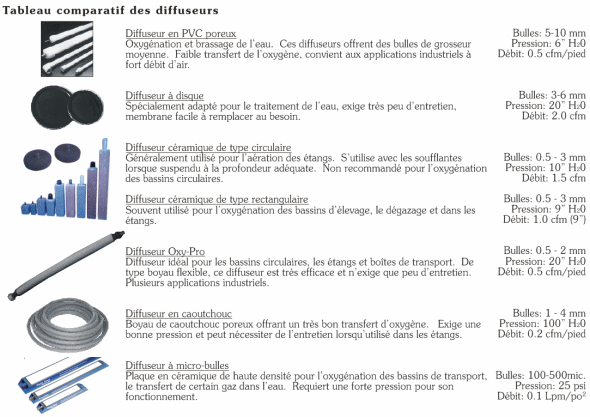Oxygenation can be accomplished with mechanical aerators, underwater diffusers or pure oxygen. Mechanical aerators agitate water to obtain air contact while the diffusers introduce in-depth air bubbles in order to get a transfer between air and water. Aerators are mostly used for visual effects and increase water circulation in lakes. Bubbling oxygenation systems (diffusers) are replacing traditional mechanical aerators due to their low maintenance and high fidelity, security and performance. Bubbling is also more effective for eliminating gases like ammonia and carbon dioxide.
Bubble systems require different air pressures depending on the size of the diffuser openings. The larger the openings, the more resistant they are to obstruction, however, a larger and less efficient bullage is obtained to dissolve oxygen in the water.
Micro-bubble diffusers are chosen for pure oxygen or ozone systems, where high pressure levels are normally available. Due to their lower cost, the medium bubble diffusers (3 mm) are the most popular in aquiculture.
How to choose the right oxygenation system
In order to choose an oxygenation system, it is necessary to take into account the costs of use. Take the example of five ponds with 30 000 trouts of 65 grams (7″) each, a water flow per pond of 50 gallons per minute at a temperature of 130°C. Under such circumstances, the total oxygen deficiency for the five ponds will be 2602 g/hour. To fill this shortfall it will be necessary to install 9 surface aerators (1/2 Hp), the latter cost about $4,857.00 per year in electricity. Using blowers and diffusers like Oxy-Pro under the same conditions, two 5 Hp blowers will fill the need with an annual cost of $2,680.00 in electricity, an economy of $2,177.00/year, not to mention the savings made by low maintenance costs of blowers.
COMPARATIVE TABLE OF DIFFUSERS


